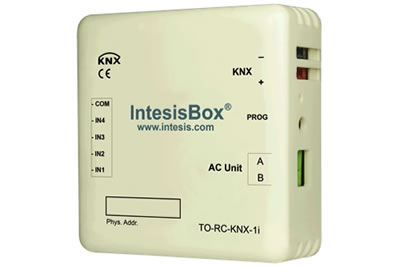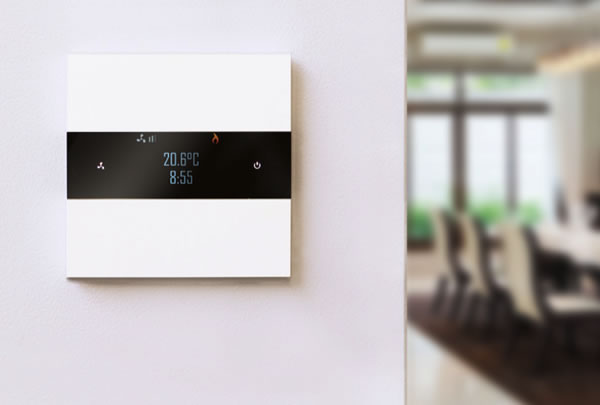 By Mark Warburton, Ivory Egg.
By Mark Warburton, Ivory Egg.
Temperature is a funny thing. The difference between being comfortable and too hot is a very fine margin, but when the threshold is crossed, it’s suddenly way too hot! The fluctuating temperature in the UK is a stark reminder of this, particularly when you are working in a building with poor insulation and a tin roof. In our training room, the roof acts as a fantastic heating element, but unfortunately it is not under the control of the KNX system.

Usually there are only a few days a year when this causes issues in the building, but with an increase in the frequency of our KNX training, plus the imminent launch of a new heating course, we felt the time was right to install air conditioning (AC) in the training room. After all, it’s rather difficult proving that a heating system works when the room is over 25°C.
With a KNX system already operating throughout the building, it seems logical to integrate the new AC unit into the wider control system. A quick check of the internal AC unit’s model number against one of the numerous KNX-AC interface units’ compatibility chart confirmed that it will be easy to take control of the unit. But what are the benefits and how do we manage the inevitable input from the AC installation company that they must install the supplied AC keypad?

Benefits of KNX integration
As is common in most homes with AC, we have a separate system in place for the heating. This means an interlock is required in order to ensure that the two systems don’t compete. With KNX however, the interlock is actually the deadband in the thermostat. By having one control system in place instead of two separate ones, the KNX room thermostat is able to make intelligent decisions on which system to use. It could even use the AC in heating mode to boost the heating system when there is a large enough demand.
If the temperature in a room is being entirely managed by the AC unit, there are still some key benefits when adding KNX control. For example, being able to control all rooms in the building simultaneously or setting up timers to change the set point at certain times of the day, is usually only possible when you install a central AC control unit, but with KNX, it is achieved easily. Also, if your alarm is already integrated into the KNX system to shut off the lighting when you leave, then extending this to shut down the AC is very simple. Trying to achieve the same functionality without KNX is much harder, particularly if there is no central AC control unit. Or it could just be that you want a better-looking keypad on the wall.
AC keypad
Thankfully, the majority of KNX AC interfaces allow complete control without the need for the original wall controller or remote. However, that is not the end of the story. Whenever two systems are integrated, it is best practice to have both systems working independently first. This means the AC installers will still need to use the proprietary controller, as without this, it is far too easy for each party to blame the other when the systems aren’t working properly.

To avoid having multiple keypads, it may be possible for the AC installers to use a remote instead of a wired controller, or for the wired keypad to be mounted in a ceiling recess or even centrally. It is also common for the keypad to be connected temporarily to the AC unit solely for the purpose of commissioning, and then removed from site, handing full control to the KNX system. Although these options sound convoluted, it is the best way to allow the AC system to be installed and commissioned correctly whilst not compromising on the benefits of using a KNX system.
Conclusion
Of course, being in the UK, by the time the AC unit has been installed, the weather will have returned to grey and cold. But by using a KNX keypad with multiple stages of heating and cooling, the training room will be kept at a constant temperature, even if heating and cooling are required in the same day. The next challenge is to integrate a calendar into the KNX system so that the training room will automatically change its set point based on the planned usage of the room – which would be really cool.
Mark Warburton is the Technical Director of Ivory Egg (UK) Ltd, a supplier of leading KNX products and provider of KNX training courses.











